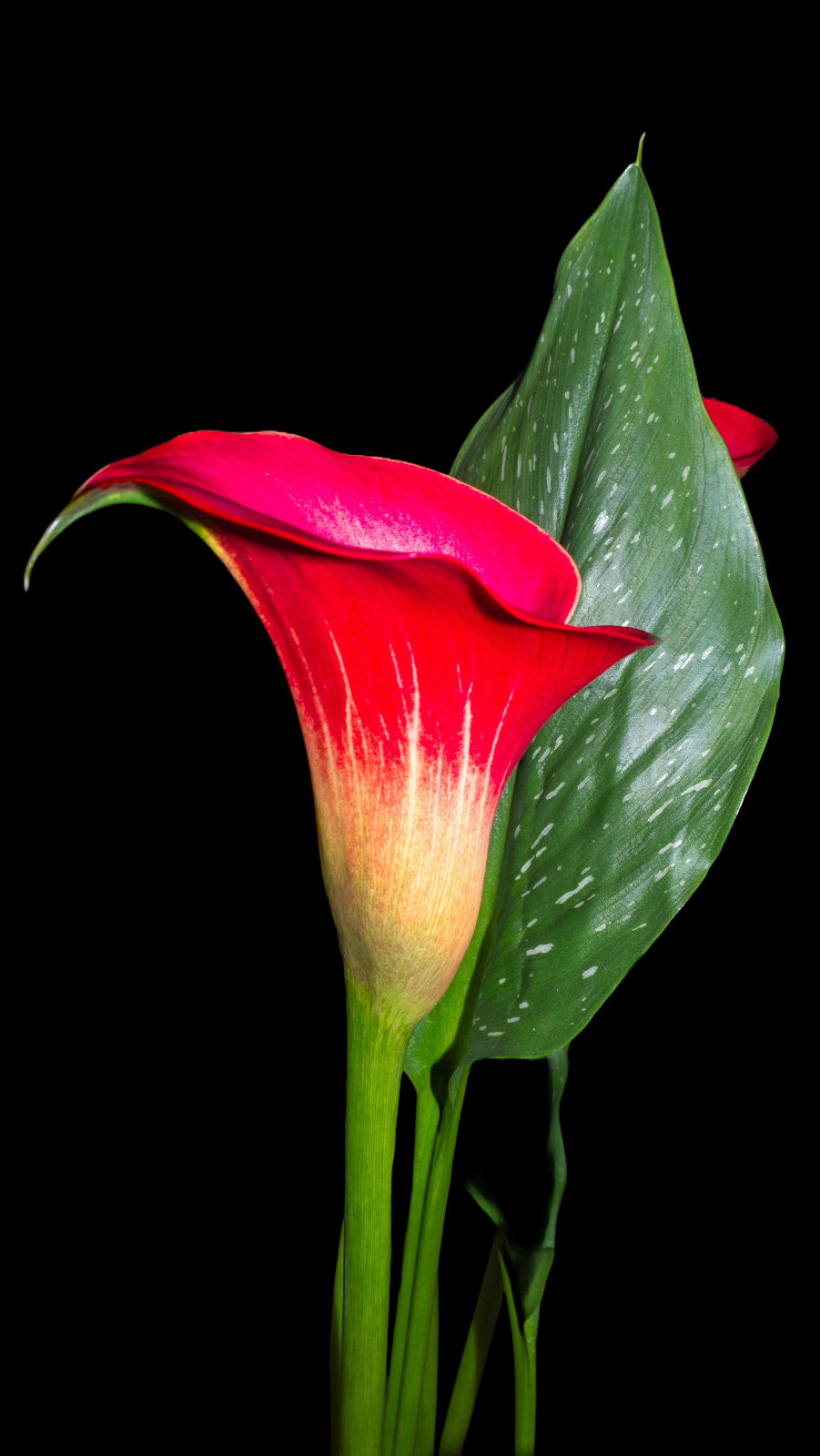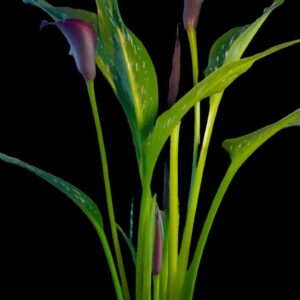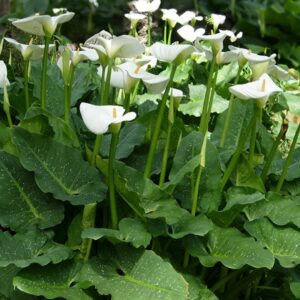Your cart is currently empty!
Unveiling the Enchanting World of Zantedeschia Hybrids

“`html
Introduction
Prepare to be captivated by the alluring beauty of Zantedeschia hybrids, a captivating group of flowering plants that encompasses a vibrant spectrum of colors, shapes, and sizes. These exquisite plants, commonly known as calla lilies, grace gardens and homes worldwide, exuding an aura of elegance and charm.
Origin and Classification
Genus Zantedeschia
Zantedeschia hybrids belong to the genus Zantedeschia, a group of perennial herbaceous plants native to southern Africa. The genus comprises eight recognized species, each contributing to the development of the captivating hybrids we admire today.
Hybrid Classification
Zantedeschia hybrids are classified into two main categories based on their parentage:
- Elliott Hybrids: Created by crossing Z. elliottiana with other species, these hybrids are characterized by their vibrant yellow, orange, and pink blooms.
- Rehmannii Hybrids: Originating from a cross between Z. rehmannii and other species, these hybrids boast an array of stunning colors including blues, purples, and blacks.
Growing Zantedeschia Hybrids
Climate and Hardiness
Zantedeschia hybrids prefer warm, humid climates and are typically hardy in USDA hardiness zones 8-11. In colder regions, they can be grown as annuals or lifted and stored over winter.
Soil Requirements
These plants thrive in well-drained, humus-rich soil with a pH between 6.0 and 7.0. Avoid waterlogged soils, as they can lead to root rot.
Sunlight and Water
Zantedeschia hybrids prefer bright, indirect light. However, they can tolerate full sun in cooler climates. Water regularly, keeping the soil consistently moist but not soggy.
Propagation
Division
The easiest method of propagation is by division. In spring, carefully dig up the plant and separate the rhizomes (underground stems). Replant the divisions in well-drained soil.
Seeds
Zantedeschia hybrids can also be grown from seeds. However, it is important to note that seedlings may not be true to the parent plant. Sow seeds in a warm, moist seedbed and transplant seedlings once they have developed several leaves.
Varieties
The world of Zantedeschia hybrids is vast and diverse, offering a wide range of varieties to choose from, each with its own unique charm.
Popular Hybrids
| Variety | Color | Size |
|---|---|---|
| ‘Black Magic’ | Deep burgundy to black | Dwarf |
| ‘Eclipse’ | Purple-black | Medium |
| ‘Golden Dawn’ | Deep yellow | Large |
| ‘Pink Persuasion’ | Soft pink | Medium |
| ‘White Swan’ | Pure white | Large |
New and Emerging Hybrids
Breeders are continuously developing new and exciting Zantedeschia hybrids. Some of the latest introductions include:
- ‘Sunray’ – A vibrant yellow hybrid with ruffled petals
- ‘Blue Moon’ – A striking blue hybrid
- ‘Rainbow’ – A mix of several colors on a single plant
Uses and Care
Zantedeschia hybrids are versatile plants that can be grown in gardens, containers, or as cut flowers. They make excellent additions to bouquets and floral arrangements.
Cut Flowers
To extend the vase life of cut Zantedeschia flowers, remove any yellow pollen from the spadix (central stalk) and cut the stems at a sharp angle. Change the water every few days to prevent bacteria buildup.
Container Culture
Zantedeschia hybrids can be grown successfully in containers. Choose a pot with drainage holes and use a well-draining potting mix. Water regularly and fertilize monthly during the growing season.
Conclusion
The enchanting beauty of Zantedeschia hybrids captivates gardeners and flower enthusiasts alike. Their vibrant colors, elegant forms, and versatility make them a welcome addition to any garden or home. Whether you are seeking a splash of color in your landscape or a stunning arrangement for a special occasion, Zantedeschia hybrids are sure to delight.
“`








Leave a Reply